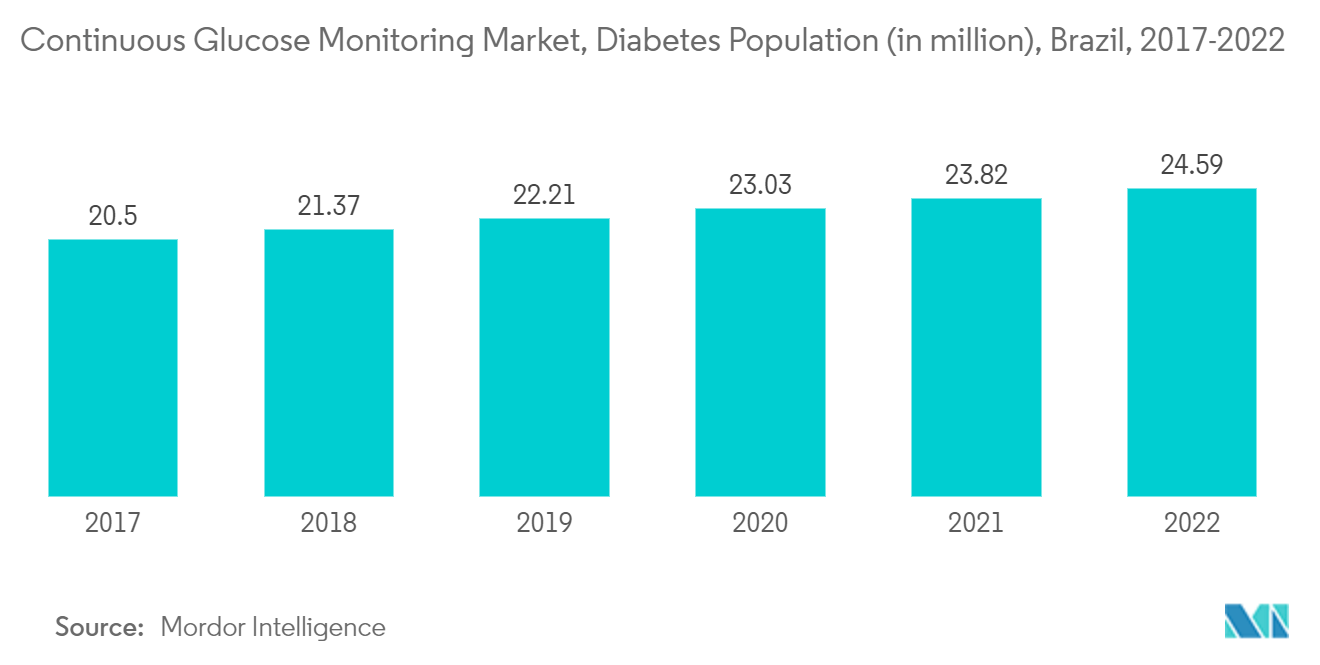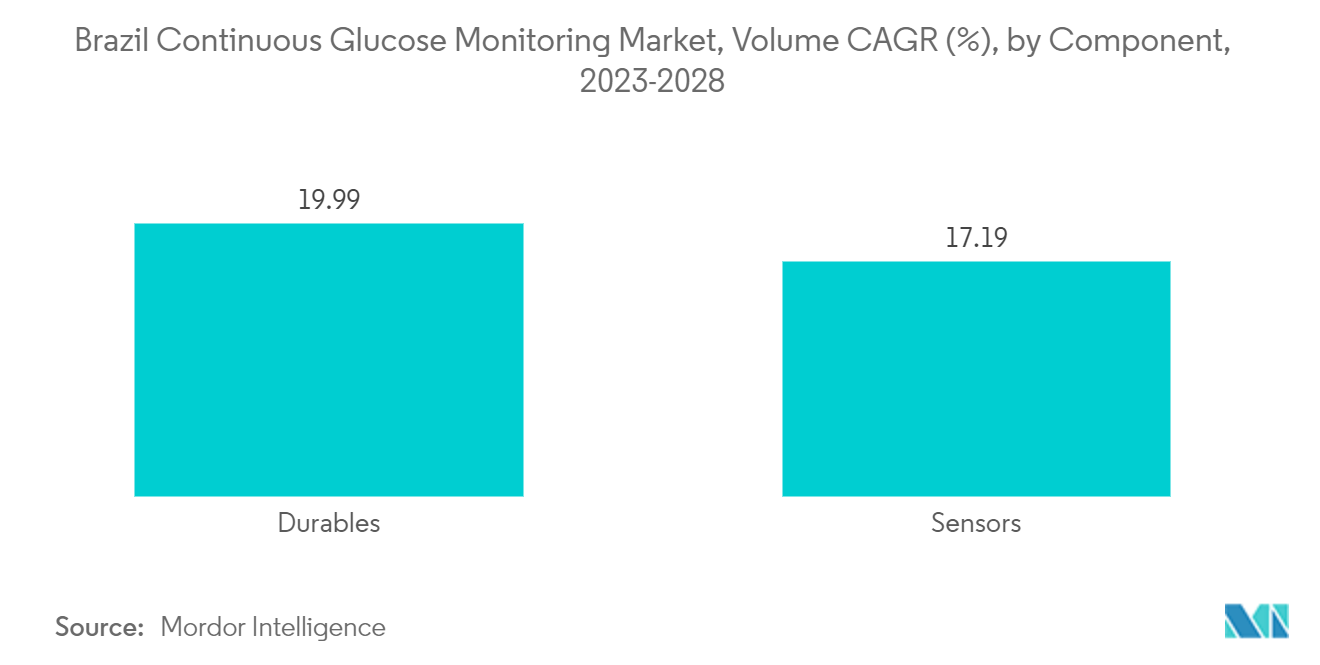Market Trends of Brazil Continuous Glucose Monitoring Industry
Rising Diabetes Prevalence in Brazil is anticipated to boost the market studied
In Brazil, the diabetes population is expected to increase with a CAGR of about 2.9% over the forecast period.
According to IDF Diabetes Atlas 2021, 15.7 million adults, about 10.5%, were living with diabetes in Brazil. The cost of diabetes-related health expenditure in Brazil is the third highest in the world, at 42.9 billion USD. In addition, 18 million adults, around 11.9%, have impaired glucose tolerance, which places them at high risk of developing type 2 diabetes. Diabetes is associated with many health complications. Comparing the population with and without diabetes, those with diabetes have an increased risk of being hospitalized and, thus, incur more healthcare expenses compared to non-diabetic people. Additional data on glycaemic control in Brazil show that only 25% met the therapeutic goal of glycated hemoglobin < 7% before the pandemic, as recommended by the Brazilian Diabetes Society (SBD).
The high prevalence of diabetes is associated with a significant economic burden. The costs of diabetes are increased in patients with co-morbidities such as hypertension and hyperlipidemia and in patients who develop complications. Costs increase with an increasing number of complications. The Ministry of Health established a list of medications and supplies provided by the Brazilian Health System to patients suffering from diabetes. However, their supply is usually not sufficient or recommended for optimal patient management across cities. In Brazil, the public health system Sistema Único de Saúde has been progressively increasing the assistance available for individuals with diabetes.
Therefore, owing to the increasing diabetes prevalence and aforementioned factors, the studied market is anticipated to witness growth over the analysis period.

The Sensors Segment is Expected to Hold the Highest Share Over the Forecast Period
The sensors segment is expected to register a CAGR of 16.9% over the forecast period.
To perform continuous glucose monitoring (CGM), a small sensor is inserted into the abdomen or arm with a tiny plastic tube known as a cannula penetrating the top layer of skin. An adhesive patch holds the sensor in place to take glucose readings in interstitial fluid throughout the day. Generally, the sensors must be replaced every 7 to 14 days. A small, reusable transmitter connected to the sensor allows the system to send real-time readings wirelessly to a monitor device that displays blood glucose data. Some systems come with a dedicated monitor, and some display the information via a smartphone app.
CGM sensors have proven to be effective for patients with frequent hypoglycemic events, sensor-augmented pumps, and gestational diabetes, treated with either continuous subcutaneous insulin infusion or a multiple daily injections insulin regimen. Researchers are trying to find and develop alternatives to electrochemical-based glucose sensors and create more affordable, minimally invasive, and user-friendly CGM sensors. Optical measurement is a promising platform for glucose sensing. Some technologies have been reported with high potential in continuous glucose sensing, including spectroscopy, fluorescence, holographic technology, etc. Eversense, a CGM sensor based on fluorescence sensing developed by Senseonics company, presents a much longer lifespan in comparison with electrochemical sensors.
It is imperative that CGM devices be used alongside insulin pumps. As the trends show a higher number of diabetic patients using insulin pumps for diabetes management, it can be predicted that the number of units of CGM devices sold will also follow. Type-1 diabetic patients require continuous monitoring to keep a close watch on their glucose levels, which is likely to generate demand in the coming years. Due to the adaptability of new technology and the high prevalence of diabetes population, the market studied is expected to grow.


